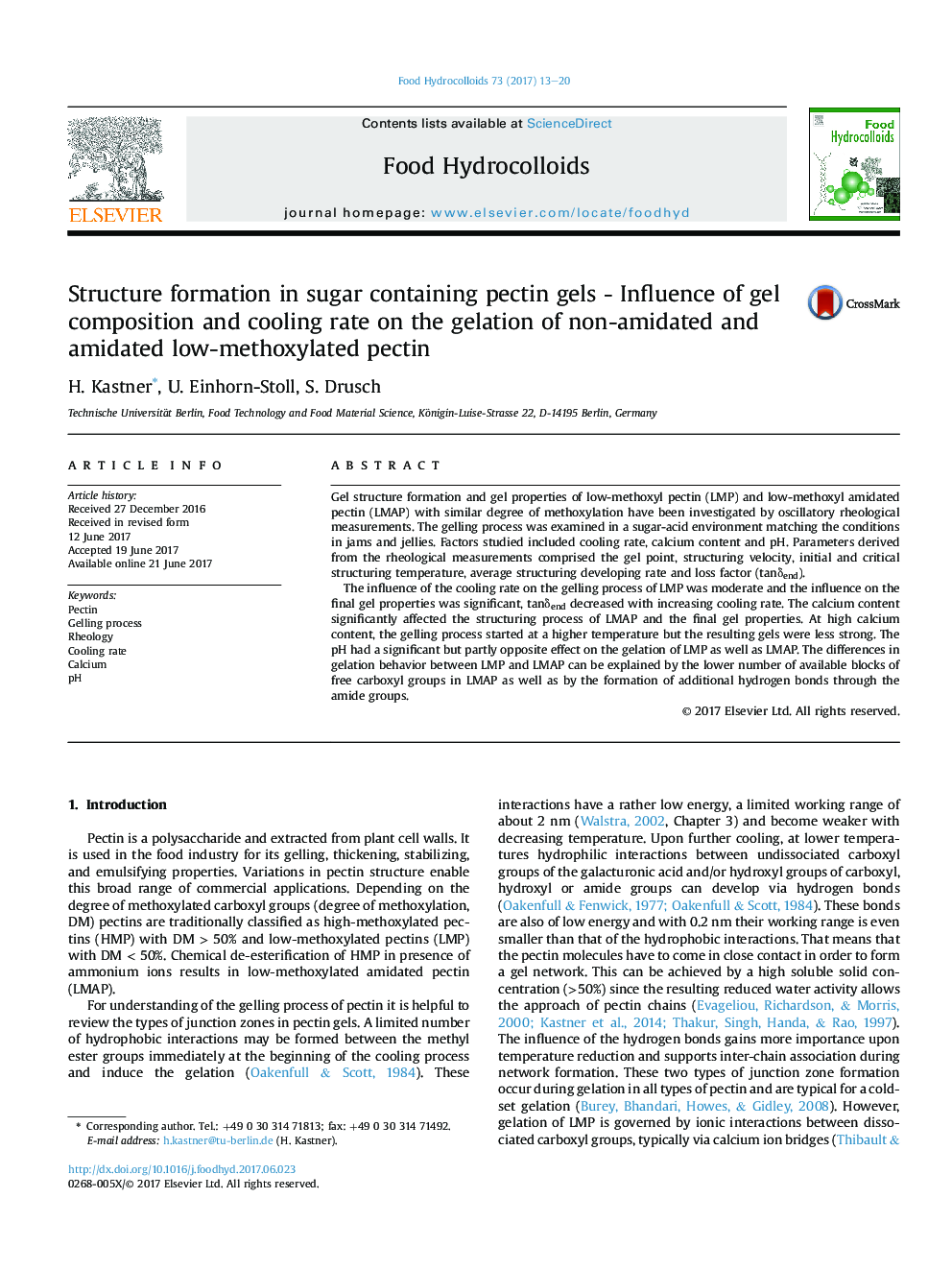| Article ID | Journal | Published Year | Pages | File Type |
|---|---|---|---|---|
| 4983806 | Food Hydrocolloids | 2017 | 8 Pages |
â¢Cooling rate: moderate influence on gelation and gel properties of LMP.â¢Ca2+: strongly significant influence on gelation and gel properties of LMAP.â¢pH: low pH delays structure formation of LMP/LMAP gels.â¢Amide groups: additional hydrogen bonds support cold-set gelation.
Gel structure formation and gel properties of low-methoxyl pectin (LMP) and low-methoxyl amidated pectin (LMAP) with similar degree of methoxylation have been investigated by oscillatory rheological measurements. The gelling process was examined in a sugar-acid environment matching the conditions in jams and jellies. Factors studied included cooling rate, calcium content and pH. Parameters derived from the rheological measurements comprised the gel point, structuring velocity, initial and critical structuring temperature, average structuring developing rate and loss factor (tanδend).The influence of the cooling rate on the gelling process of LMP was moderate and the influence on the final gel properties was significant, tanδend decreased with increasing cooling rate. The calcium content significantly affected the structuring process of LMAP and the final gel properties. At high calcium content, the gelling process started at a higher temperature but the resulting gels were less strong. The pH had a significant but partly opposite effect on the gelation of LMP as well as LMAP. The differences in gelation behavior between LMP and LMAP can be explained by the lower number of available blocks of free carboxyl groups in LMAP as well as by the formation of additional hydrogen bonds through the amide groups.
Graphical abstractDownload high-res image (114KB)Download full-size image
